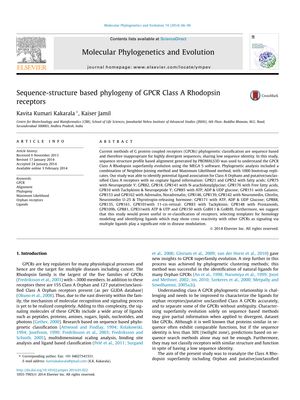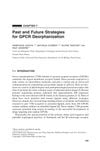Sequence-Structure Based Phylogeny of GPCR Class A Rhodopsin Receptors
May 2014
in “
Molecular Phylogenetics and Evolution
”

TLDR The research found how GPCR Class A Rhodopsin receptors are related and suggested possible substances they interact with.
The document presents a comprehensive phylogenetic analysis of GPCR Class A Rhodopsin receptors, using a sequence-structure profile based alignment and robust evolutionary analysis to understand the relationships within the superfamily. The study, which involved 1083 amino acid sequences, resulted in the formation of 36 clusters and identified potential ligand associations for orphan and unclassified receptors. It suggested that receptors such as GPR21 and GPR52 may be associated with fatty acids, GPR75 with Neuropeptide Y, and others with specific ligands like ATP, ADP, and various hormones. The analysis also indicated that certain receptors might share ligands based on their evolutionary relationships, with orphan receptors like GPR19 potentially related to vasopressin-like and peptide hormone receptors. The study concluded that this approach could aid in re-classifying receptors, selecting templates for homology modeling, and identifying ligands that may show cross-reactivity, which is significant for disease modulation. Further studies were recommended to evaluate the binding affinity of certain ligands with their respective receptors.


